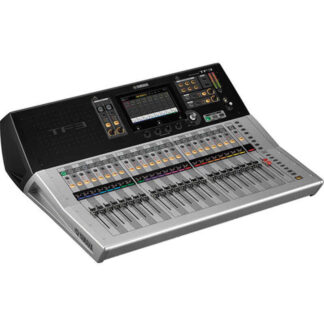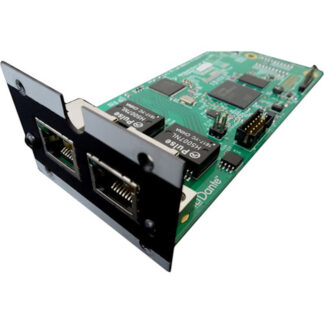Brand New
$24,999.99
Out of stock
The installation package version of the Midas PRO9 Live Audio Mixing System is designed for live sound reinforcement such as in concert venues, theaters, houses of worship, broadcast, tours, and more. The system requires the Pro9 version of the MIDAS DL371 modular, upgradeable, remote DSP processing engine (sold separately) connected via Cat 5e cabling to a networked system of up to 11 discrete I/O devices depending on the user’s specific I/O requirements. An redundant N+1 processing card can be added to the DL371 DSP engine as a backup, in the event that a card within the 371 fails.
The Midas PRO9 system is designed to be paired with both the DL351 and a DL451 modular stage boxes (sold separately) that feature 56 and 24 MIDAS designed microphone preamps respectively as well as eight analog XLR outputs in each stage box’s default configuration.
Additional I/O can also be connected using any of the MIDAS DL series digital I/O units as well as the console’s three rear panel card slots that can house any combination of MIDAS DL series I/O cards.
The flexibility of the system allows for it to be quickly reconfigured with whatever connections are required. Redundant power supplies are included with every system as part of the system’s failure-tolerant architecture.
Additionally, the console features 8 auxiliary returns, all with 4-band parametric EQ and insert points. The auxiliary returns may be used as returns using the unit’s eight internal multi-channel FX processors or as additional microphone input channels.
The console’s 88 input channels may be routed to 35 phase coherent mix busses which comprise 16 user-configurable buses (as mixes, subgroups, or mix minus groups) and eight matrix buses. The matrix busses can receive their sources from inputs or groups which allows them to be used as eight additional auxiliary (monitor mix and fx sends) for a total of 32 mixes (plus L, R & Mono) for monitor mixing. All buses can be linked as stereo pairs, except the mono bus. As with other MIDAS digital consoles, the audio paths can be routed to multiple destinations and the console format can be reconfigured live on a scene-by-scene basis.
Increased flexibility can be added to the system by utilizing a Klark Teknik DN9650 Network Bridge digital format converter offering MADI and Dante connectivity.
The standard Midas PRO9 live audio system is modular, allowing for some variations in physical placement and system size. This version of the control console is designed for install applications and arrives in a shipping crate.
FX Navigation: deploys a patched internal FX processor to the display screen and maps the ASSIGNABLE CONTROLS to the FX processor
GEQ Navigation: selects an output which has a GEQ assigned and present the GEQ on the VCA faders
MCA Navigation: deploys the MCA faders of a selected output to the VCA fader bank. In conjunction with Advanced mode, MCA navigation mode controls the contributions of their members to the currently selected bus.
With the app you can monitor ALL input and output metering simultaneously in real time, and you can remotely EQ any speaker mix with one of the console’s on-board KLARK TEKNIK DN370 GEQs.
The app also provides simple, fast local stage mix adjustment by accessing the consoles’ MCA (Mix Control Association). Multiple iPads can be used simultaneously and each one can be locked to a single mix, so artists can create their own monitor mixes without changing any other console settings. The app is free to download from Apple’s App Store






